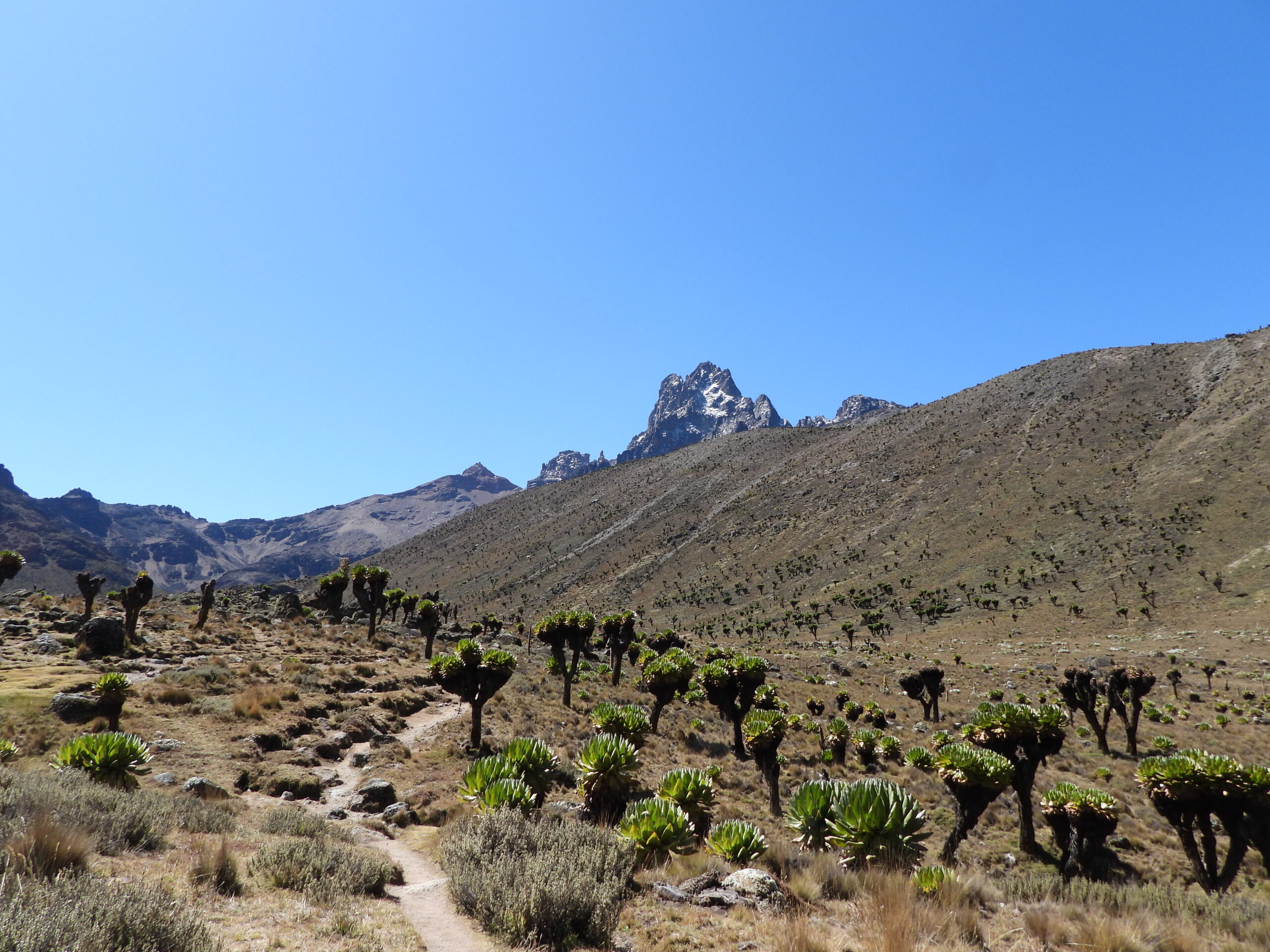
Altitude Sickness on Mount Kenya
Altitude Sickness on Mount Kenya: Symptoms, Prevention & Safety Tips. Trekking Mount Kenya is an unforgettable adventure. But as you climb higher, the risk of altitude sickness becomes real. Whether you’re aiming for Point Lenana or preparing for a technical climb to Batian or Nelion, understanding and preventing altitude sickness is essential for a safe and successful trek.
This guide from Ahambi Tours explains what altitude sickness is, when it can affect you on Mount Kenya, and how to prevent it.
What is Altitude Sickness?
Altitude sickness, also called Acute Mountain Sickness (AMS), occurs when your body struggles to adjust to low oxygen levels at high elevations. Symptoms typically begin above 2,500m, and Mount Kenya’s trekking routes reach as high as 4,985m at Point Lenana.
Can You Get Altitude Sickness on Mount Kenya?
Yes. Although Mount Kenya is not as high as Mount Kilimanjaro or Everest, it still presents a risk of altitude sickness, especially for those who ascend too quickly or don’t acclimatize properly.
Altitude sickness is most common on short treks or routes with steep altitude gains like Naro Moru. Even fit and healthy trekkers can experience AMS.
At What Altitude Does Sickness Start on Mount Kenya?
Altitude sickness can begin as low as 3,000m. The key elevation points on Mount Kenya include:
- Sirimon Gate: 2,650m
- Old Moses Camp: 3,300m
- Shipton’s Camp: 4,200m
- Point Lenana Summit: 4,985m
As you climb higher, oxygen levels decrease, increasing the chances of AMS.
Symptoms of Altitude Sickness While Trekking Mount Kenya
Typical symptoms include:
- Headache
- Nausea or vomiting
- Dizziness or lightheadedness
- Shortness of breath
- Loss of appetite
- Difficulty sleeping
- Fatigue
If symptoms worsen, it may develop into more serious conditions like High Altitude Pulmonary Edema (HAPE) or High Altitude Cerebral Edema (HACE), which are medical emergencies.
Who Is Most at Risk of Altitude Sickness?
Anyone can develop AMS, regardless of age or fitness level. You’re at higher risk if:
- You ascend rapidly without rest days
- You have a history of AMS
- You do not hydrate or eat properly
- You ignore early symptoms
How to Prevent Altitude Sickness on Mount Kenya
- Trek Slowly: The golden rule is “Pole pole” – take it slow and steady. Rapid ascents increase your risk.
- Choose a Longer Trek: 5 to 6-day itineraries allow time to acclimatize. Avoid rushing the summit.
- Stay Hydrated: Drink 3 to 4 liters of water daily. Avoid alcohol and caffeine which can cause dehydration.
- Eat Well: Consume energy-rich meals. Trekking burns calories, and your body needs fuel to acclimatize.
- Listen to Your Body: If you feel symptoms, rest. Don’t ascend further until they subside.
- Use Diamox (Optional): Some trekkers use Acetazolamide (Diamox) to prevent or reduce AMS symptoms. Speak to your doctor before your trip.
Trekking Routes and Their Altitude Profiles
Sirimon Route
- Gradual ascent
- Best for acclimatization
Chogoria Route
- Slightly longer but scenic
- Ideal for gradual adjustment
Naro Moru Route
- Fastest but steepest
- Higher AMS risk due to rapid elevation gain
Do You Need Diamox for Mount Kenya?
Diamox is not required but can be helpful for some trekkers. At Ahambi Tours, our experienced guides monitor clients for AMS symptoms and ensure the pace supports proper acclimatization.
How Ahambi Tours Helps You Acclimatize Safely
- We recommend 5 to 6-day treks for better altitude adjustment
- Our itineraries allow for gradual altitude gain
- Our guides are trained in altitude safety and first aid
- We provide briefings before each trek to ensure you’re well-prepared
FAQs About Altitude Sickness on Mount Kenya
- Can beginners get altitude sickness?
Yes, even first-time hikers can get AMS. It depends on how your body adjusts to altitude, not your fitness level. - Is it safe to trek Mount Kenya?
Yes, with the right itinerary, pacing, and guide support, Mount Kenya is safe for trekking. - How long does it take to acclimatize?
Most people need 1–3 days above 3,000m to begin acclimatizing. That’s why longer treks are safer. - What if I feel sick during the trek?
Let your guide know immediately. Ahambi Tours guides will assess your condition and adjust the itinerary or descend if needed. - Can I summit Point Lenana without getting sick?
Yes. Many of our guests summit safely by following our slow, well-paced itineraries. symptoms and ensure a safe pace. - Do I need supplementary oxygen when trekking Mount Kenya?No, supplementary oxygen is not needed for standard treks to Point Lenana (4,985m). While the altitude is high, most trekkers acclimatize naturally with proper pacing, hydration, and a well-planned itinerary. For technical climbs to Batian or Nelion, oxygen may be carried for emergency use only. At Ahambi Tours, our guides monitor all trekkers for altitude symptoms and ensure a safe pace.
Book Your Safe and Memorable Mount Kenya Trek with Ahambi Tours
At Ahambi Tours, your safety is our top priority. Our guides are trained in altitude management and our itineraries are designed to help you enjoy the mountain safely.
Ready to summit Point Lenana or climb Batian?
Book your Mount Kenya trek today: Mount Kenya Trekking info@ahambitours.co.ke WhatsApp: +254 725 727167
